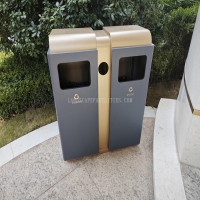Welcome to the website for landscape facilities products and knowledge.
How does the trash can’s design ensure it is easy to integrate with IoT-enabled waste management systems?
The integration of trash cans with IoT-enabled waste management systems relies on innovative design features that prioritize connectivity, automation, and data-driven efficiency. Modern smart trash bins are equipped with embedded sensors, such as fill-level detectors, motion sensors, and weight measurement tools, which transmit real-time data to centralized waste management platforms. These sensors enable optimized collection routes, reducing fuel consumption and operational costs.
Wireless connectivity modules (e.g., Wi-Fi, LoRaWAN, or cellular networks) ensure seamless communication between the trash can and cloud-based systems. Some designs also incorporate solar panels to power these components sustainably. The physical structure of IoT-ready bins often includes standardized mounting points for sensors and modular compartments for easy tech upgrades.
Additionally, smart lids with touchless opening mechanisms improve hygiene while gathering usage analytics. By aligning with open IoT protocols, these designs ensure compatibility with diverse waste management software, making them a scalable solution for smart cities. The result is a closed-loop system where design and technology work together to minimize environmental impact.
Related search:

Recommendation
Double-bucket garbage bin, outdoor, metal, multi-color, powder-coated, double-bucket trash can